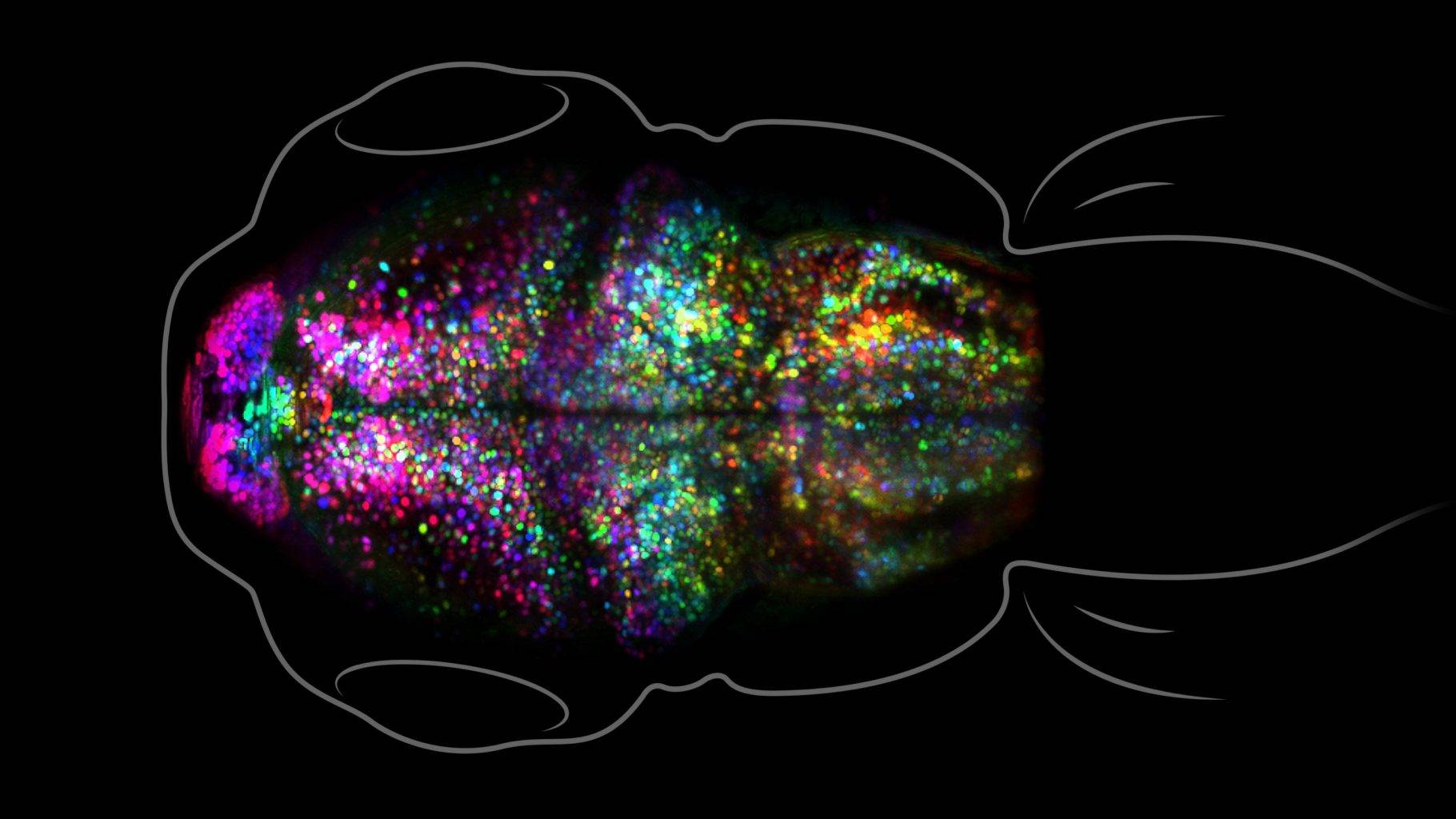To induce a memory, Fraser and his team conditioned the zebra fish larvae to associate a light with being uncomfortably heated, much as the 19th-century Russian physiologist Ivan Pavlov conditioned his dogs to salivate in expectation of a treat when they heard the sound of a bell. The zebra fish larvae learned to try to swim away whenever they saw the light. (In the experiment, the larvae’s heads were immobilized but their tails were free to swish around as an indicator of the learned behavior.) The researchers imaged the pallium before and after the fish learned, and analyzed the changes in synapse strength and location.
Contrary to expectation, the synaptic strengths in the pallium remained about the same regardless of whether the fish learned anything. Instead, in the fish that learned, the synapses were pruned from some areas of the pallium — producing an effect “like cutting a bonsai tree,” Fraser said — and replanted in others.
Previous studies have sometimes suggested that memories can form through the addition and deletion of synapses — but this real-time and large-scale visualization of the brain suggests that this method of memory formation may be much more significant than researchers realized. Though it’s not definitive proof, “I think it provides compelling evidence” that this could be a major way the brain forms memories, said Tomás Ryan, a neuroscientist at Trinity College Dublin who was not involved with the study.
To reconcile the results of their new study with their initial expectations of memory formation, Fraser, Arnold and their team hypothesize that the type of memory might direct how the brain chooses to encode it. These “associative events that we’ve looked at might be the strongest sort of memories,” Fraser said. For the fish they’re do-or-die, so “it’s not too surprising that you might encode these strong memories in a very strong way.”
But what’s appropriate for locking in fear-ridden memories may not be best for more mundane types of memories. When learning to pronounce somebody’s name, you probably “wouldn’t want to be yanking synapses out of your brain and adding new ones,” Fraser said.
Fraser and his team hope that this model might eventually help them examine mechanisms involved in the memories that trigger post-traumatic stress disorder, and that it might even lead to potential strategies for moderating that condition.
But it’s possible that the findings have more to do with the age of the zebra fish than with the type of memory formed, said Cliff Abraham, a professor of psychology at the University of Otago in New Zealand who was also not part of the study. “We know that there’s a lot of pruning and synaptic reorganization as a result of experience during development in different parts of the brain,” Abraham said. If the researchers look at adult zebra fish — which is harder to do because they’re less transparent and have bigger brains — they might get different results.
The paper is a “technical tour de force,” he added, but it’s only a piece of the puzzle of how memories form, and there are still many remaining unanswered questions, such as how long those memories and synaptic changes persist in the zebra fish.
The researchers hope to see if the findings translate to animals with larger brains and even to mammals, and to examine how these zebra fish and other animals form memories that are less emotionally laden or traumatic.
“I think everybody has thought that there’s a whole range of ways that a brain could be storing memories,” Fraser said. “The beauty of it is, I bet all of them are right. And the question’s going to be: How does it all work together?”

